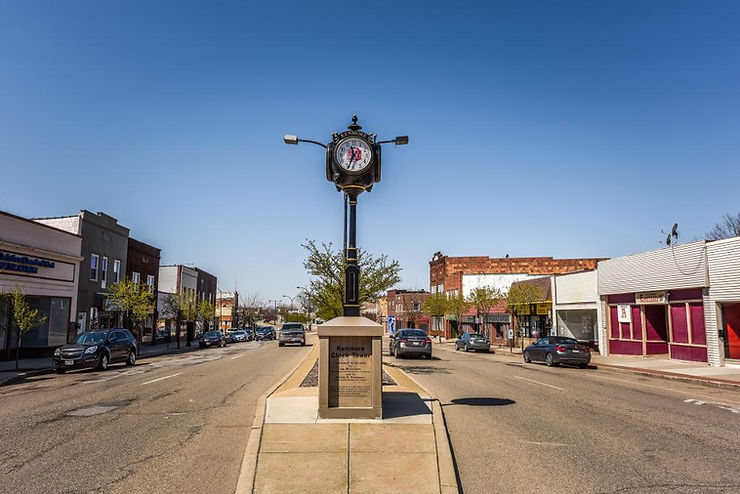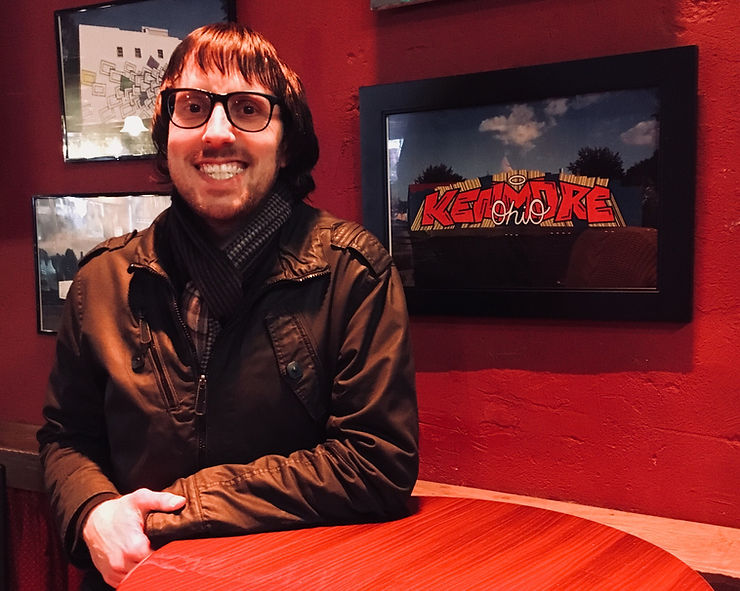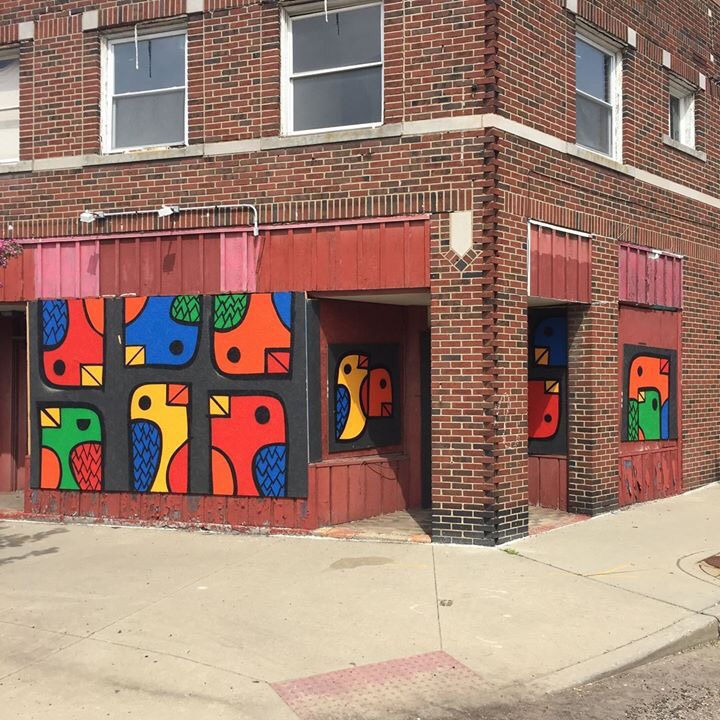By Dan Shingler

The main stretch of Akron’s Kenmore Boulevard is known as just “the Boulevard” to locals. – Photo by Shane Wynn for Crain’s
Kenmore used to be a bit of a black sheep among Akron’s neighborhoods. Now it’s a beacon of hope and a potential crucible for urban redevelopment.
“I love Kenmore. It’s one of my favorite neighborhoods in Akron,” said Jason Segedy, Akron’s director of planning and urban development, as he began a tour of the southside neighborhood, just west of Firestone Park.
To be fair, Segedy has said the same about a lot of Akron’s neighborhoods: The man loves a good street, whether it’s lined with trees, businesses or even solid, old buildings in need of investment. Kenmore Boulevard, for the most part, would be the latter.
But Kenmore is special, Segedy said, because unlike other Akron neighborhoods that are trying to redesign themselves to become pedestrian- and bike-friendly to appeal to urban lifestyles, Kenmore was designed that way from the start.
“Do you see how all the buildings are pushed right up to the sidewalk? That’s exactly what you want to see,” Segedy said as he drove down the main drag of Kenmore Boulevard past a mix of storefronts that range from vibrant to shuttered.
Kenmore Boulevard is becoming a hot spot for Akron’s music industry and starting to attract interest from real estate investors.
Segedy sees a lot of potential for Kenmore to turn around, and he was a big reason the city announced April 30 it will repave and reconfigure the main stretch of Kenmore Boulevard. That’s something businesses and advocates applaud. Most are willing to narrow the stretch if it will slow car traffic and allow more foot traffic.
Segedy isn’t the only person who sees potential. Investors and business owners have started to recognize it, too.
The focus is nearly all on what people simply call “the Boulevard” — the strip of Kenmore Boulevard that runs roughly from 17th Street SW to about 12th Street SW. This is the heart of the neighborhood and the section that makes Segedy smile.
Here, Kenmore Boulevard is lined with old two-story commercial structures, many built 75 or more years ago. They don’t look much like the developments that followed them in other parts of the city.
They were built in an era of street cars and pedestrians, Segedy explained, so buildings come right up to the sidewalk. There’s only a single lane of parking in front, though most of the buildings have parking in the rear.
On the street level, you’ll find Lay’s Guitar Shop and the Guitar Department, both of which cater to Kenmore’s growing music scene. Other spots include Kenmore Komics & Games, E&S Hobbies and Trains, and the Rialto Theatre. The area also boasts as many as eight recording studios. Plus, there are drum makers and at least one other guitar maker.
Todd Ederer purchased four of the buildings along this stretch in the past three years. He’s no stranger to Akron or the challenges of old industrial real estate. He’s done work downtown, some of which with developer Tony Troppe, and owns Fairlawn-based Ederer Real Estate and Construction.
“I love these little two-story buildings, and I love how they’re right up to the street. Some of them need varying degrees of work, but I’ve seen through other explorations what can happen to these business districts,” Ederer said.
He’s working to rehabilitate the buildings and to get them into use in ways that benefit the neighborhood, he said, adding that he’s not looking at them as short-term investments but multiyear projects.
Ederer wants to help rebuild the Boulevard because that’s what will help the community and add the most value to his properties.
For now, though, his main tenant is the Kenmore Neighborhood Alliance, which is headed up by executive director Tina Boyes. Her name comes up a lot when you talk to Kenmore businesses. Many say she’s the “dynamo” behind the neighborhood’s redevelopment and Kenmore’s recent success at building up its music industry.
Ederer has allowed the alliance, free of charge, to open Live Music Now at one of his buildings, 952 Kenmore Blvd. It’s the neighborhood’s newest music venue, with a small stage for intimate shows with acts too small to use the larger Rialto down the street.
Plans call for a coffee shop to soon open there during the day, so the spot will have live music in the evenings and provide the neighborhood with a much-needed café and social spot, Boyes said. The coffee shop would be owned by Ederer, the building owner and the alliance’s landlord, she said.
“Our goal is to change the image people have of this neighborhood,” said Boyes, who added she’s aware of Kenmore’s image of having a rural attitude.
“We’re Appalachian, but that’s why you get the great music here, too,” Boyes said.
Boyes said she’ll probably never be satisfied with the state of Kenmore, but that she’s optimistic about its current direction. Residents are engaged, she said, as evidenced by the participation in Kenmore’s Better Block event in September.
Usually held over a weekend, Better Block events temporarily alter a neighborhood to give people a sense of what might be.
In Kenmore, the Boulevard was spruced up and reconfigured for pedestrians and cyclists. That work helped shape some of the plans the city just unveiled for the Boulevard, Segedy said.
Residents say Kenmore is “sticky,” too. Its community often draws people in once they’ve spent some time there — people like Noelle Beck, executive director of the First Glance Student Center, which provides Kenmore teens with support and activities, including an indoor skate park on Kenmore Boulevard.
“I was looking to do an outreach program somewhere with youth that needed it … and here I am almost 18 years later and I live here. In 2008, I moved into the community,” Beck said. “A lot of our volunteers move into the community.”
Kenmore business owners credit Boyes with re-energizing and bringing more people into the Neighborhood Alliance, helping to get new music venues open and to promote their shows, coordinating the Better Block, working with city officials on street and traffic issues, and generally raising the profile of Kenmore — and especially that of its music district.
That includes Lay’s Guitar Shop, which has done repair work for all sorts of musicians and instrument collectors for more than 40 years.
The shop even fixed two of Pete Townshend’s guitars that were smashed in performances and are now owned by a collector.
“We’ve taken in 80 guitars in the last three weeks. I can’t remember that happening since the old days, back in the ’70s or ’80s,” said Dan Shinn, owner of Lay’s.
Next door, Ed Michalec, owner of the Guitar Department, said he’s similarly enthused.
“I’m excited. I think (the Boulevard) is doing great. For a while, we didn’t know what was going or what direction things were headed, but everything’s been really good and positive lately,” he said, crediting Boyes for “turning theory into action” in the neighborhood.
Like Boyes and others, Ederer says there is still much to be done, including his current effort of securing a historical designation for the Boulevard that would provide some tax credits and incentivize development. Then, he hopes to house a restaurant, coffee shop and more retailers in his buildings, because it will be easier to finance projects there.
But it’s not as if Kenmore doesn’t have its challenges as well. The former Rolling Acres Mall, once a premier shopping destination in the region, with nearly 1.5 million feet of thriving stores, is a mess. Today, it’s mostly a demolition site and its 8,000 empty parking spots only make it look even more desolate.
The city has changed how it looks at that site, Segedy said. It’s no longer viewed as a spot likely to attract retail development. But with large nearby roadways and easy access to expressways, it’s an ideal site for light industry or a warehousing and distribution operation. Segedy said the city is talking to parties who have expressed such an interest, but it is not yet ready to announce a deal.
Kenmore also has the same challenges of almost any urban neighborhood in a Midwest city. Its housing stock is older, and some of it needs repair and rehabilitation. But some of it is also in great shape, Segedy said.
Kenmore is the only neighborhood in Akron that sits on two lakes: Nesmith and Summit. Some homes perched on the hill above Summit Lake have views that would rival anything found in Portage Lakes to the south.
But, like most of the roads in Kenmore, everything about the neighborhood’s prospects seems to come back to the Boulevard. That’s where the neighborhood alliance, city officials and investors have most of their hopes pinned. If the central business district can be brought back, the revitalization will spread from there — or at least that’s the hope.
And along those lines, things seem to be progressing more quickly after years of effort. Existing business owners are already changing their views of Kenmore, and Boyes and others hope potential businesses will follow their example.
“At one point, I was thinking about going somewhere else, but I’m here to stay now,” Michalec said.


